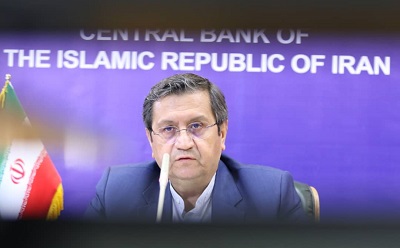24 May 2021

As prepared for delivery;
Distinguished Guests, Ladies, and Gentlemen,
I am honored to participate in the gathering of the esteemed representatives of the ACU member states. It is a great pleasure to address the distinguished delegates on the latest measures adopted by the Central Bank of the Islamic Republic of Iran in monetary, banking, and foreign exchange areas in the last Iranian year of 1399 which includes 2020/21.
Dear Audience,
The Iranian economy was exposed to primary and secondary sanctions imposed by the US as well as multiple financial and economic challenges. A decline in oil export receipts and the fall in the foreign exchange resources of the country, coupled with difficulties in terms of the access of the CBI and Iranian banks to foreign assets were the main factors behind instability in the foreign exchange market and later in other financial markets. Meanwhile, the COVID-19 pandemic affected not only the national health system but also the people as well as the business actors in various sectors of the economy. It set the ground for the surge in the exchange rate and its later unfavorable ramifications. In this context, the CBI took certain constructive measures and policies in monetary, foreign exchange, and supervisory arenas. The highlights of the CBI policies include:
1- Monetary policymaking in the form of inflation targeting programs using the Open Market Operations and the medium-term targeting of the interest rate in the interbank market by setting the policy rate;
2- Expanding brokerage activities with the aim of reducing transaction costs, facilitating banks and non-bank credit institutions' access to sovereign debt instruments, repairing and rebuilding balance sheets, and financing the government out of securities;
3- Channeling the interest rate and managing liquidity in the interbank market in line with the policy interest rate to fulfill the inflation target;
4- Making a concerted effort for the further deepening of the interbank market and directing banks toward this market, aimed at paving the way for the sound implementation of the monetary policy and reducing the role of the CBI in the short-term financing of banks and credit institutions;
5- Executing macroprudential policy measures to control money creation by banks and credit institutions, mop up excess liquidity, and strengthen financial stability and soundness.
Congruent with its long-term mandate, the CBI has adopted certain measures for stringent supervision and reform of the banking sector. As a result, banks' debt to the CBI started a downward trend during November 2020 to March 2021. At the same time, based on preliminary figures, M2 increased by 40.6 percent in March 2021 which, compared with the 31.3 percent growth rate of March 2020, indicated an increase of 9.3 percentage points. It is important to note that liquidity growth occurred mainly out of the rise in the monetary base which was in turn due to the increase in the net foreign assets of the CBI.
Honorable Guests,
Despite all the trade and financial restrictions and difficulties in terms of foreign currency limitations, the CBI has managed to stabilize the foreign exchange market in recent years and months through the control of the flow of the domestic currency and the supervisory measures on foreign currency procedures. However, some months of the year 2020/21 were still witness to the soaring trends of the exchange rate. This was in the aftermath of the continuation of the pandemic and its negative effects on the global economy which in turn affected the economy of Iran. The crude oil prices, as well as the non-oil exports, declined and tensions in the international arena led to the formation of some negative expectations regarding the future trends of the exchange rate.
The upward trend of the exchange rate came to a halt in October 2020. Accordingly, the average exchange rate for the US dollar, as well as its coefficient of variation, declined in March 2021 compared with October 2020. This reduction may be interpreted as an adjustment in negative expectations and a sign of tranquility in the foreign exchange market.
According to the preliminary estimates, Iran's GDP growth was 2.2 percent in the nine months of April to December 2020. Meanwhile, the non-oil GDP indicated 1.9 percent positive growth over the same period. Taking into account the economic sanctions and the COVID-19 pandemic, this favorable growth trend may well signal an exit from economic slowdown for 2021 which is predicted to continue over the coming periods.
In conclusion, I would like to thank you for your attention and express hopes for further deepening and expansion of banking, trade, and financial relations between member states.
Thank you very much